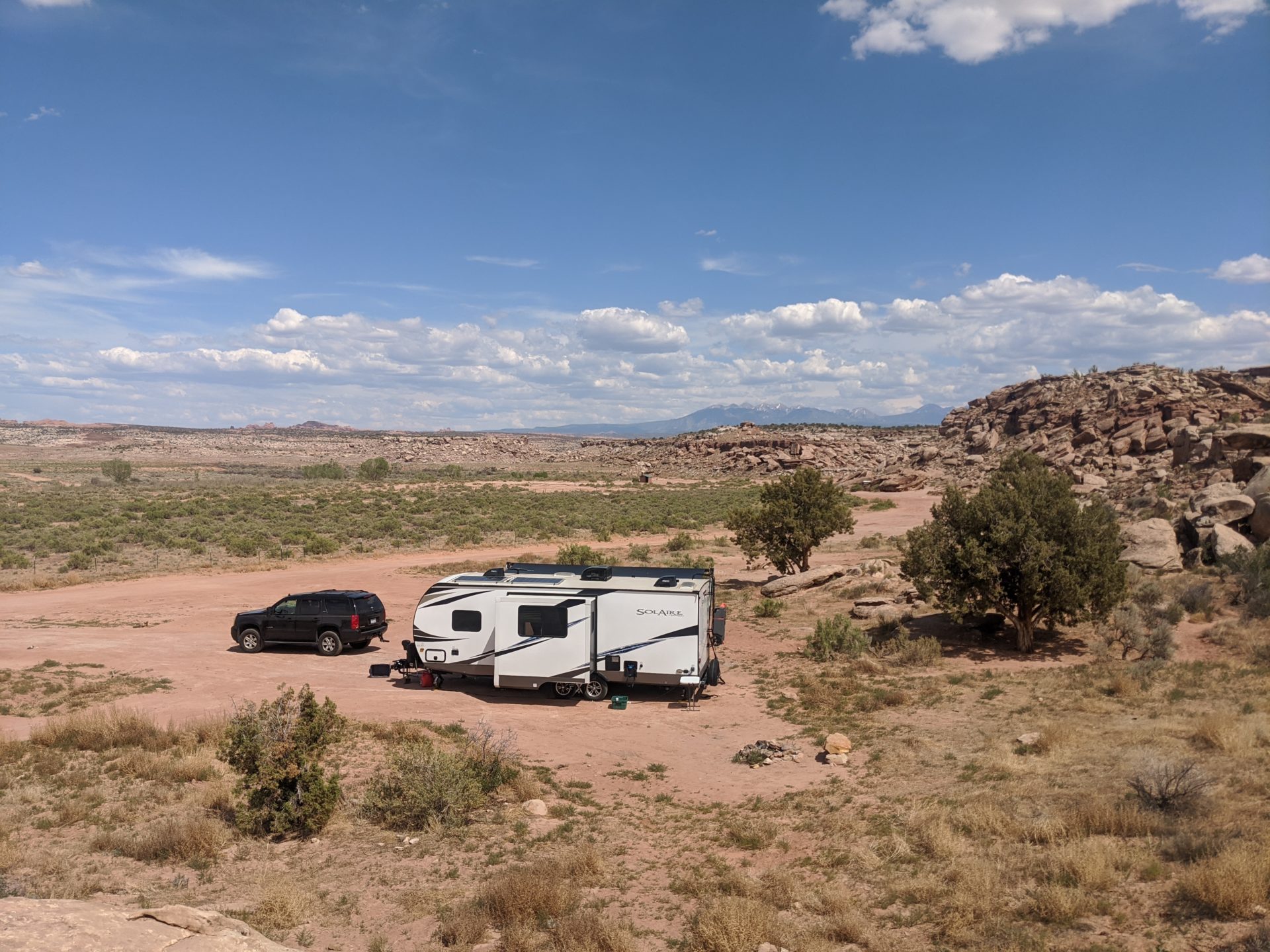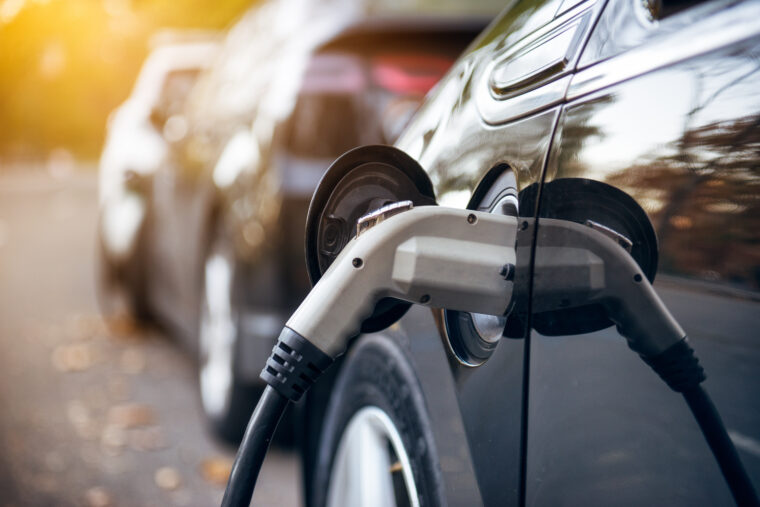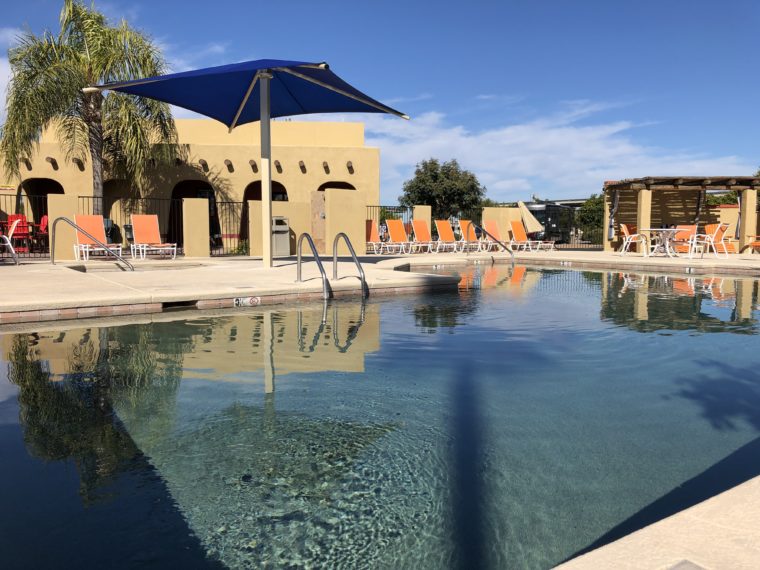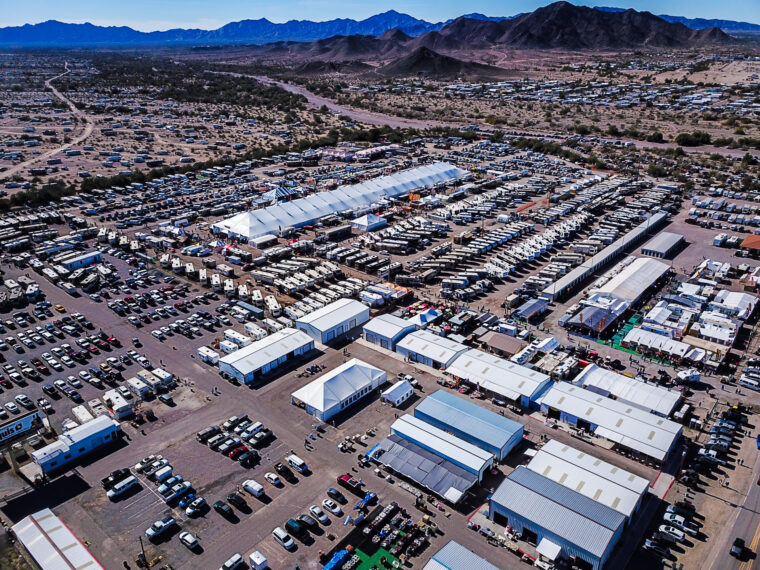The explosion of crowds in Southern Utah’s natural areas is creating new challenges for campers looking to stay near some of the state’s popular national and state parks. Fortunately, some relief is on the way for those looking to experience the deserts, mesas, and great camping as the state prepares to start work on its newest state park, Utahraptor.
“The first phase we’re doing is just trying to get the infrastructure in,” says Utahraptor State Park Manager Josh Hansen. “That’s what’s most expensive and then we can get the campground in, and we can start to recoup costs.”
Utahraptor State Park will capture the beauty in the area just outside of Arches National Park with desert plants, stunning red rocks, and hard-packed trails. Officials hope to start construction this summer, but the final timeline is still undefined as the park system faces challenges with inflation and supply-chain-related delays.
Current Camping Options
Utahraptor will create 30 to 60 new camp spots about 15 miles north of Moab. The plan comes in response to land usage and conservation concerns. Two campgrounds will offer primitive and full hookups for those with RVs, plus a dump station, a restroom, and a shower house.
Currently, the land is open to the public for free camping, but recent overuse—the same issue that led to the park’s creation—is causing problems. Officials also hope that the new area will help Arches better handle crowds by creating more options.

“We’re trying to work with Arches to help them alleviate some of their entrance wait times,” says Hansen. “We’re working with them to figure out a way people can mountain bike in and out, but that’s in the very early stages.”
To avoid disrupting camping access at Utahraptor, campers are permitted to continue camping in the area for a $15 fee. Campers are asked to only camp in areas with a preplaced fire ring to help reduce the impact on the desert environment.
“Camping has exploded over the last 2 years with the COVID-19 pandemic and there’s been a lot of campsites created over the last few years that are just not sustainable,” says Hansen. “There’s a lot of campsites in places there shouldn’t be, so we’re trying to prevent further environmental degradation.”
Hansen says the response from visitors is mixed. Some are happy to see the land protected, while others have pushed back as they now need to travel further to find free camping near Arches.
History in the Park
When the park does open, it will include lots of history. Utahraptor gets its name from the fossil of a dinosaur with the same name. The park’s visitor center will feature a life-size replica of the dinosaur found on the property. However, not all history at the park dates back to the Cretaceous Period.

A new focus, with the help of an interpreter center, will shed light on a dark moment in U.S. history. The Dalton Wells area of the park still houses the remains of buildings and concrete slabs from a Citizen Isolation Center, which was a Japanese internment camp during World War II.
For now, visitors are asked to be patient as the park transitions from a protected space to a state park. Access to the area will continue but with some new guidelines. “The rule is: If there isn’t a fire pit there, don’t create a new one,” says Hansen. “That’s how we’re managing the campsites now, and we’re working to remove fire pits in areas we don’t want people camping.”
Right now, there isn’t a set date for when the state park will officially be complete, but it’s expected to take about a year. For the time being, camping will be first come, first served.






